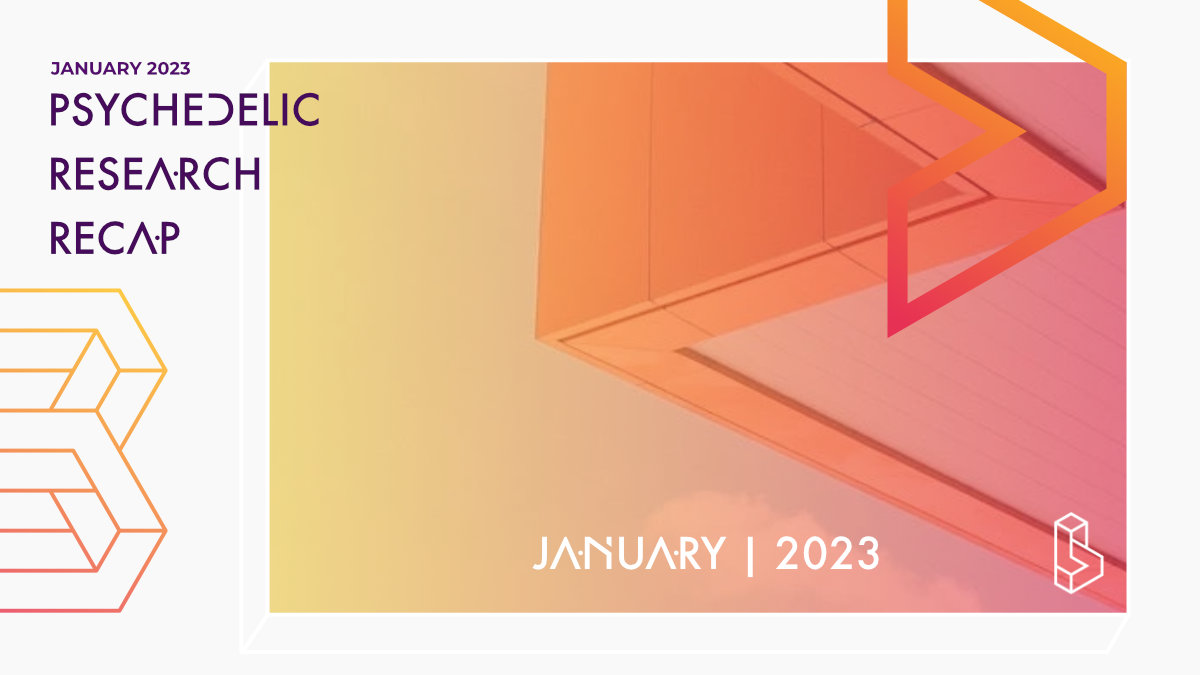This January, outcomes of psychedelic use were closely examined. Studies looked at how experiences are integrated, how challenging experiences lead to growth, and the relationship between psychedelic use and nature-relatedness.
We also saw the first (case) study of changing menstrual patterns after psychedelic use, and the safety of psychedelics for those immunocompromised. In this review, we cover the 20 most interesting papers that came out this January.
The consequences of psychedelic use
A representative survey finds six out of ten recreational users have never had a bad trip. Of the 600 who had used psychedelics, 9% indicated having a bad trip lasting beyond the day of dosing. One in 40 had sought help after a distressing experience.
An analysis of NSDUH survey data (6300 psychedelic users) finds correlations between psychedelic use and substance abuse disorders. Those who used LSD and psilocybin were likelier, while those who used mescaline were less likely to abuse other substances.
The previous study contrasts with a third survey (3800 participants) which found that those who took psilocybin were higher on a score of nature-relatedness. The researchers see a relationship between nature-relatedness and other positive traits. Noted should be that all these effects are correlational, and other factors (e.g. socio-economic) can also explain the relationships.
Looking specifically at those going to a retreat, an interview study finds one in three experiencing challenges in integration. The participants, who went to a Synthesis retreat, reported challenges, including a lack of support or spiritual bypassing. But, having a challenging experience correlated with positive after-effects, including long-term remission of significant health conditions.
Investigating psilocybin-assisted therapy (PAT), researchers identified characteristics of patient ‘readiness’. The theory-building article discusses intrapersonal (e.g. openness to experience & motivation) and interpersonal (e.g. therapeutic alliance) factors that would help identify who will be most helped by PAT.
New areas under investigation
Women’s health and psychedelics is a topic that is rarely, if ever, talked about in psychedelic research. An interview study (three participants) breaks this pattern and finds diverse reactions to psychedelics. One participant had a resumption of menstruation, another found it came earlier, whilst the third interviewee reported improved regularity.
Microdosing has been regularly covered in psychedelic research. What is novel about a naturalistic study is the focus on emodiversity (the diversity of emotions) whilst microdosing. The study finds a decrease in positive and overall emodiversity. Though participants reported more awe, there were fewer happy, glad, and joyful emotions.
The cost-effectiveness of ketamine, but how sure are we?
An economic modelling study argues that esketamine is cost-effective for treatment-resistant depression (TRD). The study compares the costs to several models of societal outcomes in Italy. Though promising, the evidence for (es)ketamine treatment, especially on long-term outcomes, is still quite limited.
That is also what a recent review argues that looked at 22 studies, four of which were RCTs (the gold standard). The review covers data from over 2300 patients, and identifies antidepressant effects but also cautions that there is a high chance of bias in the RCTs.
Still, that hasn’t stopped smaller studies from further investigating the (short-term) effectiveness of ketamine in different populations. One such study finds comparable effects between those with bipolar and unipolar treatment-resistant depression. It even finds the anxiety-reducing effects to be greater for the bipolar group.
Similarly, a case series (four patients) finds ketamine an effective add-on treatment for those with psychotic treatment-resistant depression. The ability to use ketamine next to other drugs (e.g. antidepressants) is, next to the wide availability, what sets it apart from classical psychedelics.
The other studies that came out in January
Two studies propose theories of 1) how ayahuasca works and 2) the underlying structure of brain signals that produce (or at least correlate with) consciousness. The first synthesises the psychotherapeutic and neurobiological processes that go on and is a perfect, and very up-to-date, overview of the effects of ayahuasca. The second shows that patterns of brain activity (structure-function coupling) are a generalisable indicator of consciousness. An increase in coupling indicates lower/no consciousness (e.g. anaesthesia) and psychedelics are associated with decoupling.
Further analysis of the creativity studies by Wießner and colleagues finds lower complexity of language whilst under the influence of a low dose of LSD. Though we generally believe psychedelics to increase certain processes (lighting up the brain in scans), this study and the previously discussed microdosing study also show lowered complexity (of language and emotions respectively).
What isn’t lowered is the immune response of cells (T cells and monocyte immune response) when exposed to several classical psychedelics. Though the study is in cells, the researchers argue that it provides evidence for the safety of psychedelics for those with terminal illnesses (for whom they can provide psychological relief).
Finally, two studies look further at MDMA-assisted therapy for PTSD. The first investigates fMRI data from veterans and first responders. It finds a correlation between reductions in PTSD and amygdala-hippocampal connectivity, and 2) reduced amygdala-precuneus connectivity during memory recall. The second study is a pre-print which finds that participants had significant improvements in self-experience (e.g. the ability to identify and describe emotions one experiences). Bessel van der Kolk (The Body Keeps The Score) is the first author of the study.
What you can find on Blossom
In January, we added 20 research papers to our database. We also linked over 95 papers in our January Link Overview. With psychedelics research showing no signs of slowing down, we at Blossom will continue to make information on psychedelics as medicine easily accessible.
If you enjoy Blossom, please subscribe to our weekly psychedelic research newsletter. And make an account to browse the website without limits.
Become a psychedelic insider
Get a Pro Membership to enjoy these benefits & support Blossom📈 full reports on Topics & Compounds
🧵 full summary reviews of research papers
🚀 full access to new articles
See Memberships

